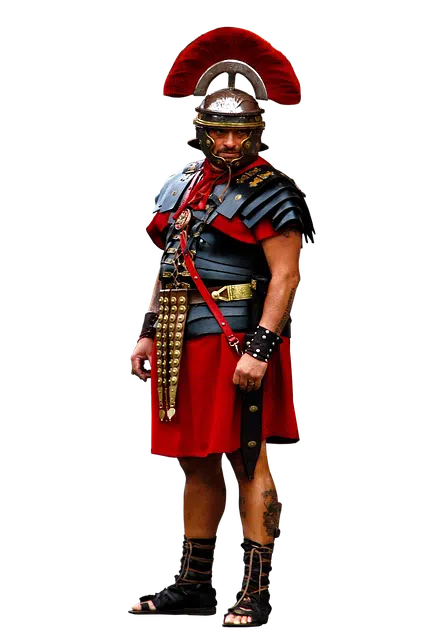
A centurion was an officer in the Roman army.
A centurion was the head of a century : a militia of the Roman Empire made up of one hundred soldiers, as detailed in the dictionary of the Royal Spanish Academy ( RAE ). Centurions, therefore, were officers who had administrative and directive powers.
The centuries belonged to groupings known as cohorts . Beyond what was indicated by the RAE , these militias did not always have a hundred members. In fact, it was common for them to have between thirty and eighty soldiers.
Function of a centurion
The centurions led the centuries and, in turn, were part of a hierarchy within each cohort. To differentiate themselves from the rest of the members of the militia, centurions wore a particular uniform that included armor, a white tunic, leg protectors, and a crested helmet. They also had a command staff and, unlike common soldiers, they carried their sword on the left side of their body.
In their work, the centurions were assisted by the principals , non-commissioned officers who were located below them in the hierarchical structure of the militias. Among the main ones there were three different grades.
Your uniform
The uniform of the Roman centurion was one of the fundamental elements to distinguish them from other soldiers, and this is known thanks to iconographic sources that are mainly reflected in certain historical reliefs, such as the Orange Arch , in various funerary inscriptions and in certain sarcophagi dating from the 2nd to 4th centuries.
The uniform tunic was short and white; During times of very low temperatures it was worn together with shorts. The armor was made of scales or chain mail; It was generally covered with hanging bracelets and decorative medallions.
As mentioned above, the Roman centurion carried his short sword (called a gladius ) on his left side. He held it to his body with a belt that had the sheath attached to its structure. On his legs he wore protective pieces called greaves , which extended from the base of the foot to the knee.
Centurion's Crest
The crest that was placed on the helmet of Roman centurions crossed the head laterally. According to several historians and theorists, originally all soldiers wore this plume and its arrangement was not at all arbitrary but rather had the purpose of allowing the rest of their companions to see them from behind; However, during the time of the Empire it was not common for all soldiers to wear a crest since it was reserved for centurions, and thus it became one of the elements that easily distinguished them.
Although there is no archaeological evidence that indicates the color of the crest, it is believed that it could be red, black or white. Lastly are the sandals of the centurions, which were similar to those of the other soldiers.

Centurión is the name of a Uruguayan town in the department of Cerro Largo.
A battle tank, a town and a movie
Centurion, on the other hand, is the name of a battle tank created in England in the mid- 1940s . These vehicles were used for almost half a century and participated in various military engagements.
In Uruguay , meanwhile, there is a small town called Centurión , which is located in the department of Cerro Largo . Very close to the town is the so-called Centurion Pass , which allows you to reach Brazil .
In 2010, finally, a British film titled "Centurion" was released, belonging to the action genre and directed by Neil Marshall. The story is based on the legend of the Ninth Legion massacre that took place in the 2nd century in the part of Britain known by the Latin name Caledonia . The film stars Michael Fassbender, Olga Kurylenko and Dominic West.
